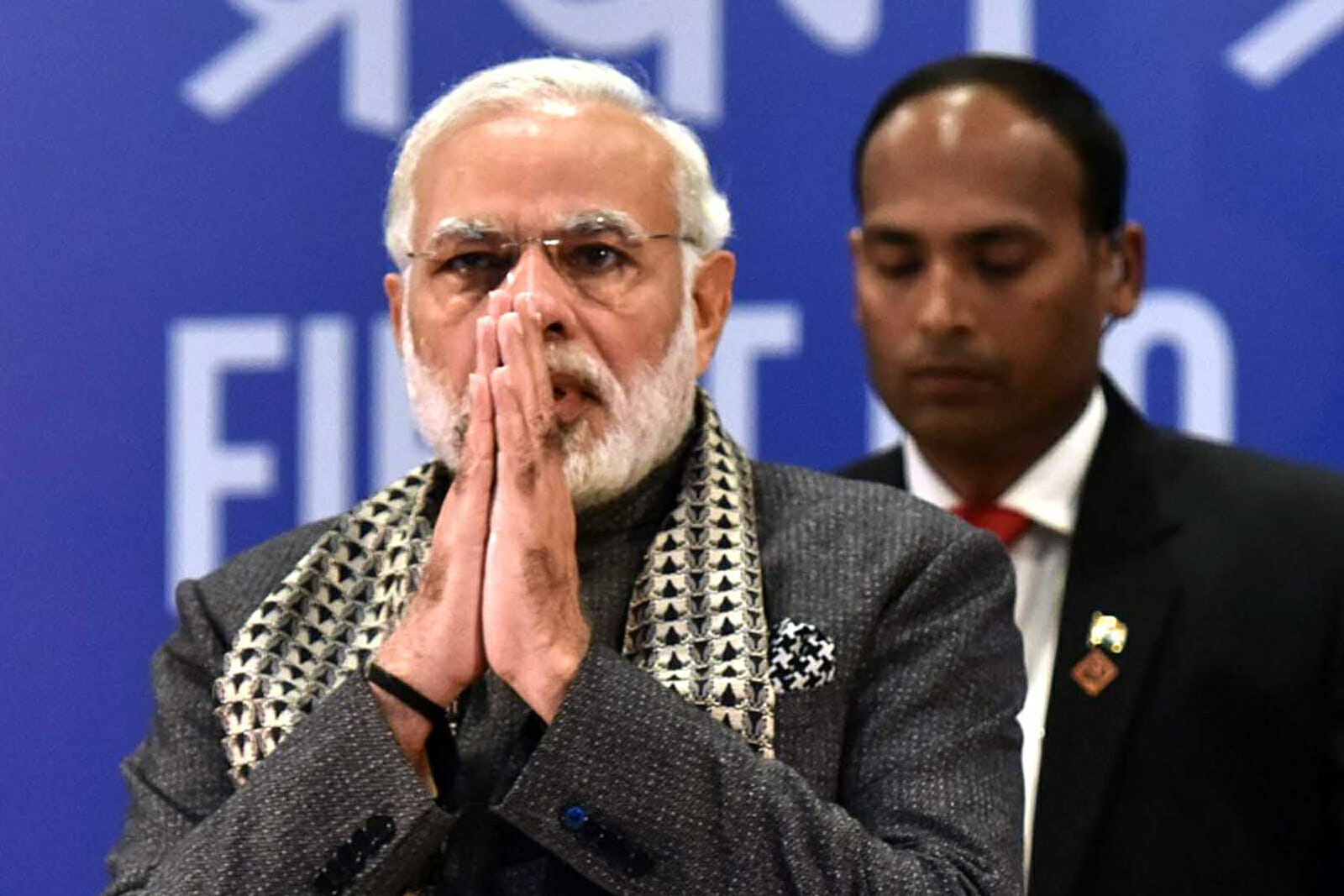
India in a New World of Great Power Tensions
Last weekend, G20 leaders gathered in Osaka, Japan for their annual summit to discuss issues that range from the global economy, investment and trade to women’s empowerment and development at a time the two largest economies (the U.S. and China) have not yet been successful in ending a trade dispute that could have a negative impact on the global economy. Aside from the formal sessions in each summit, G20 summits offer an opportunity for heads of states to engage in bilateral meetings on the sidelines of the formal summit to discuss bilateral relations, reduce tensions and coordinate their positions where needed and discuss some international crises.
At a time the relevance of the informal grouping is questioned, at least the bilateral and trilateral (where possible) engagements are important for both regional and global security at a time of increased competition between states. As the ‘unipolar moment’ is now over or close to cede, and inter-state competition seems to shade a number of key global hotspots in areas that include economics, security, and technology. India, one of the fastest growing economies in the world, is one country that is increasingly aligning itself with the U.S. but also cannot ignore the reality of its neighbour, China and its growing influence in what New Delhi could consider its own sphere of influence. At the same time, New Delhi’s relations with the U.S. are complicated – the two are not strategic allies, but as their interests align on different areas, structural factors diverge their partnership in other areas.
India’s ‘new strategic alignment’ with the U.S.
Following the tumultuous decades of the Cold War, India has ushered itself into a new era of placing itself in a position of global leadership, and to start it off, it is one of at least nine-confirmed states with advancing nuclear capabilities – a capability that changes New Delhi’s security and threat perception compared to other Asian countries that depend on the U.S. extended deterrence as a recent War On the Rocks piece argued. As a country that tested its first nuclear device in 1974, albeit it is not one of the signatories of the Non-Proliferation Treaty (NPT), a report from The National Interest has confirmed that India has been phasing out its outdated aircraft and sea-based systems. Additionally, as India’s population surges, along with its expanded role in the global markets, Washington is fully aware that India is of geostrategic importance in maintaining trade, security and upholding the Rule of Law in the Indo-Pacific region, specifically against the increasingly belligerent China. This is why the Department of Defense’s recently-published Indo-Pacific Strategy Report mentioned this very fact. Furthermore, as of September 2018, the U.S. and India have signed the Communications Compatibility and Security Agreement, which fosters technological advancement and communications between the militaries of both nations.
Having said that, that is not to say that this alliance has its many pitfalls. First, it appears that the trade war between China and the U.S. has eclipsed the ongoing trade dispute between New Delhi and the U.S. Before Secretary of State Mike Pompeo made a brief visit to New Delhi amidst these very trade tensions in late-June, New Delhi unilaterally placed tariffs on imports of at least 28 different foods exported from the U.S., most notably, almonds in response to Washington’s decision to apply tariffs on aluminum and steel last year. President Trump terminated India’s designation as a beneficiary developing nation under Washington’s Generalized System of Preferences (GSP) as the U.S. trade representative accused New Delhi of failing to provide ‘assurances on equitable and reasonable access to the Indian market on numerous sectors.’ As reducing trade deficits take a top priority in President Trump’s foreign policy, it seems that the trade dispute between India and the U.S. could serve as an obstacle to their strategic partnership. Trade between the two countries exceeded $140 billion last year, with a trade surplus of nearly $25 billion for India.
Secondly, in recent times, many Indian employees who have pursued a formal education in the United States have faced increased scrutiny while their employer is in the process of submitting an H1-B petition on their behalf. The H1-B visa is a non-immigrant, employment-based visa that grants recipients with the temporary authorization to work in the U.S. in a specialized field. Additionally, if their employer is willing to sponsor H1-B visas, their employees may have a pathway to obtaining Legal Permanent Residency in the U.S. As of late, this tribulation for Indian students escalated even further as the U.S. Department of Justice has taken action by charging four Indian-Americans for committing visa fraud through the use of H1-B applications.
Lastly, speculation has arisen over India’s questionable commitment to the multilateral alliance known as the Quadrilateral Security Dialogue (Quad) between Australia, Japan, the United States–it was Japanese Prime Minister Shinzo Abe who first proposed this collective with the intention to deter China from achieving total and complete hegemony in the Indo-Pacific region. While the convening of the Quad reignited after a 10-year hiatus due to former Australian Prime Minister Kevin Rudd’s decision to withdraw from this alliance back in 2007, the alliance reasserted in 2017 with talks between the four countries in the assistant secretary level and joint military exercises among its members bilaterally and among other countries in the region.

But the role of India in this alliance is concerning for U.S. policymakers. Admiral Phil Davidson, Commander of the U.S. Indo-Pacific Command has recently indicated that India has ‘not fully demonstrated its continued commitment to this cooperative initiative for multiple reasons. The admiral suggested that the Quad might be ‘shelved for now.’ The reason India may not see the immediate need for the Quad is perhaps New Delhi’s could be concerned with the consequence of its increasing cooperation with others against an informal alliance that Beijing sees it as against its interests, as both China and India are trying to mitigate their thorny bilateral relations in order to maintain stability in their long border (a concern for both countries). Other strategic issues that could be solved by the two states if engaged properly, but could worsen the bilateral ties if not managed effectively and could disappoint decision makers in both capitals include India’s imports of Iranian oil and its decision to acquire the Russian made S-400 surface to air missile system. India has already stopped buying Iranian oil, but there are reports that are suggesting that New Delhi may resume its energy imports from Iran in the coming weeks, an area that may challenge Washington’s ‘maximum pressure’ campaign against Iran.
Ultimately, on the bright side for India, due to the ongoing tensions between the U.S. and China, recently more and more U.S. based companies have been placed in a position where they are pondering the possibility of relocating their manufacturing operations from China to India–of course, from the perspective of each U.S. firm, it is paramount that they prioritize their own self-preservation over anything else. According to a poll conducted by CNBC in February 2019, one in five corporations that are a part of the CNBC Global CFO Council have made both serious and credible accusations that Chinese-based companies have, in fact, stolen their intellectual property for the past decade. In other words, these egregious acts of corporate espionage have hindered many American-based companies from maximizing their profits, which may be a reason why India may become a new hotspot for some of these companies in the event that they make the ultimate decision to forsake their presence in China. This alone does not necessarily demonstrate the easing of tensions between the U.S. and India, but at least for now, “the enemy of my enemy is my friend,” and for both nations, China is no legitimate ally of theirs by choice.
India’s ‘complicated relations’ with China and Russia
For New Delhi, having close ties with China is important as the two most populated countries in the world share more than 3000 km of land border and Beijing serves as India’s largest trading partner with a bilateral trade that exceeded $80 billion in 2017. However, the two countries have not enjoyed an outstanding partnership compared to their growing trading relationship. China’s growing economic and strategic partnership with India’s neighbour and adversary, Pakistan under the China-Pakistan Economic Corridor served as a hindrance to a close partnership between the two neighbours. But so does the longstanding border dispute between the two states in both Aksai Chin and the North East Frontier Agency, where the two countries engaged in hostilities that date back to 1962.
In 2017, India and China engaged in a military standoff in the border for more than two months for a road in Doklam – which is part of the disputed area and is close to the tri-junction between Bhutan, China, and India. The standoff began when China started building a new road in Doklam plateau and the two sides only disengaged their forces in the area when Beijing decided to halt the construction of the road.
Following the face-off, the two countries decided to engage in a high-level, informal dialogue to reset relations, which China’s President Xi Jinping hosted in April 2018. Known as the Wuhan Summit, it seems that the rapprochement served well for India’s interests and reduced the level of tensions between the two neighbours. For example, since April last year, the two countries have resumed joint military exercises and New Delhi secured Beijing’s support on sanctioning the leader of the JeM Masoud Azhar, a terrorist group that is based in Pakistan earlier this year, following the tensions between Pakistan and India after the Pulwama attacks in February. But there are still areas that the two countries do not see eye to eye on – India is not a signatory of China’s Belt and Road Initiative and actually it is critical to the project, especially elements of it like the China-Pakistan Economic Corridor, where New Delhi considers that it is violating India’s sovereignty. India has also not yet secured an admission to the Nuclear Security Group, the global body that controls exports of nuclear material and Beijing is the main obstacle to India’s quest. In turn, it is widely expected that Xi Jinping may visit India later this year, to continue this informal format for China and India to discuss bilateral ties, and address the challenges.
On the other hand, as India’s relations with Russia is on a steady base since the days of the Cold War, where the Soviet Union was an important partner of India, bilateral ties face a new challenge on the changing geostrategic environment of the Indo-Pacific. U.S.-India relations improved well since the end of the Cold War, which could have an impact on New Delhi’s bilateral ties with Russia, especially if the U.S.-Russia relations further deteriorate. A recent example is New Delhi’s decision to acquire Russia’s S-400 surface to air missile, which if not settled could have a negative impact on the emerging U.S.-India relations as it would invite U.S. sanctions. From a Russian perspective, the growing strategic significance of India is welcomed, as it could be part of replacing the current ‘unipolar’ world order to a multipolar one through a strategic triangle that involves China, India, and Russia – a view that is long held in Moscow since the days of Yevgeny Primakov’s leadership in Russia’s foreign policy.
In a world where great power competition is anything but a reality, New Delhi could be confronted by this new reality, which would challenge its traditional position as a ‘non-aligned’ state. Especially as India faces strategic and structural challenges that could limit its ability to act ‘independently’ in the realms of defense and foreign policy, which could further depreciate its bilateral ties with both China and the U.S. India is not forced to choose China or the U.S. at the moment, but as long as its strategic ties with China are complicated, one would expect New Delhi to pivot towards the U.S. in order to counterbalance against China’s influence, but the U.S.-India relations will be a complicated alignment and would not become over time a strategic alliance. The two would increase their bilateral cooperation on multiple areas, and there is the potential for further cooperation, but that would not make India the cornerstone of the U.S. strategy in the Indo-Pacific over time.


